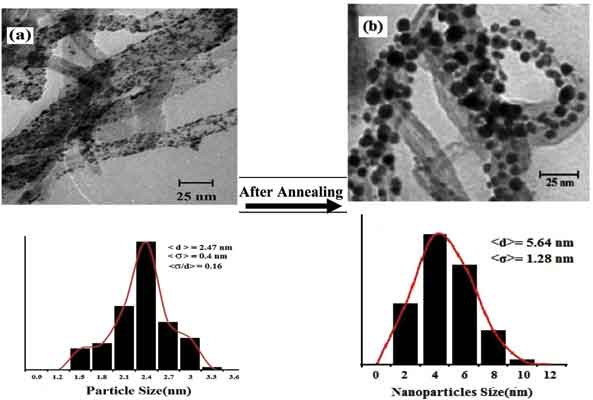Abstract
In this paper, a CVD method is used for the synthesis of multi-wall carbon nanotubes (MWCNT) which have been purified and functionalized. The approach consists of thermal oxidation and subsequent chemical oxidation. According to TEM images, the CNTs have a diameter about 20-30 nm. We synthesized the FePt nanoparticles on the surface of the functionalized carbon nanotubes through a polyol process. The synthesized FePt nanoparticles have the chemicallydisordered face-centered cubic (fcc) structure with superparamagnetic behavior and with a size of about 2.5 nm. To achieve phase transition from fcc to ordered structure (fct-L10 phase), high-temperature annealing under a reducing atmosphere (90% Ar + 10% H2) is required. The CNTs as a substrate prevent the aggregation of particles during thermal treatment. The FePt nanoparticles after phase transition have ferromagnetic behavior. Furthermore, they have finite size with an average about 5.6 nm and their coercivity reaches to 5.1 KOe at 700°C. We characterized the structure, composition and magnetic properties of FePt/CNT by X-ray diffraction (XRD), transmission electron microscopy (TEM), field emission scanning electron microscope (FE-SEM), Fourier transform infrared spectroscopy (FT-IR) and vibrating sample magnetometer (VSM).
Keywords: Carbon nanotubes, chemically-disordered structure, fcc and fct- L10 structure, FePt nanoparticles, ferromagnetic, superparamagnetic.

























